Tehran's Most Famous Palaces | Iran's Historical & Cultural Heritage
Tehran, Iran's capital city, is a melting pot of history, culture, and architecture. One of the most striking features of this beautiful city is its grand palaces.
Tehran's palaces are like time machines, taking you on a journey through different eras of Iranian history to showcase rulers' wealth, power, and artistic sensibilities. In this blog, we will take a tour of some of the most magnificent palaces in Tehran and explore their fascinating histories.
Golestan Palace
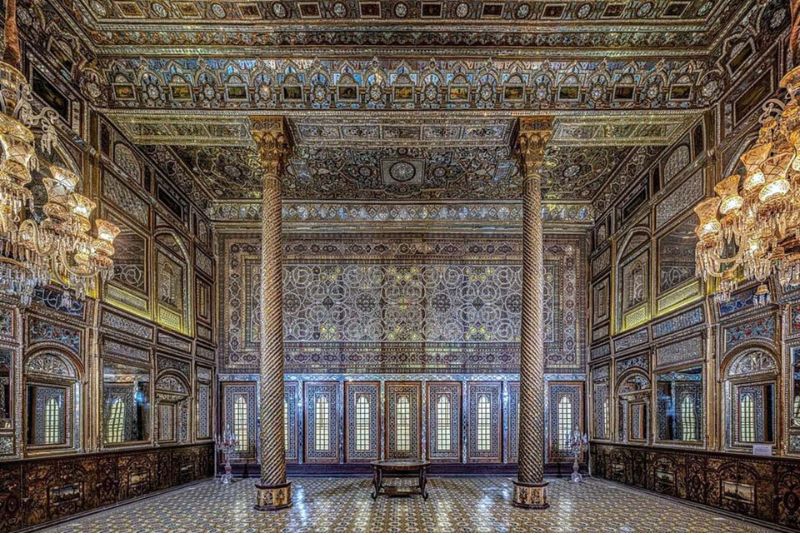
As one of Tehran's most iconic royal palaces, the Golestan Palace is a superb place to lose yourself in the beauty of Iranian art and architecture. This UNESCO world heritage site was originally built during the Safavid dynasty in the 16th – 18th century and underwent many renovations and expansions by different kings over the years, mainly during the Qajar dynasty in the 18th – 20th century. The Palace was the official residence of the Qajar kings and has witnessed many historical events, including the coronation ceremonies of both Reza Shah and Mohammad Reza Shah. The Palace also comprises many halls, including:
Takht-e Marmar (Marble Throne)
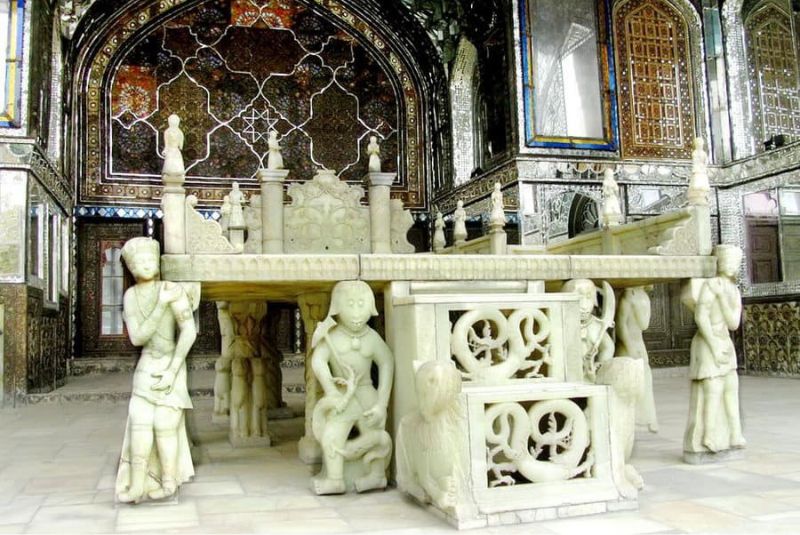
This is a reflected, open-fronted hall bogarted by a glorious throne made on a large scale to display the kingdom's glory. The throne was created in the early 1800s by the order of Fath Ali Shah, the second monarch of the Qajar dynasty. Carved human figures defend the throne, with demons and fairies holding the throne, just like Solomon's throne.
The marble throne hall was used for Nowruz greetings of Qajar kings and formal events, including the coronation of Reza Shah in December 1925.
| Suggestion: Naqsh-e Rustam | Ancient Treasures & Zoroastrian Legacy
Khalvate-e Karim Khani (Karim Khan Nook)
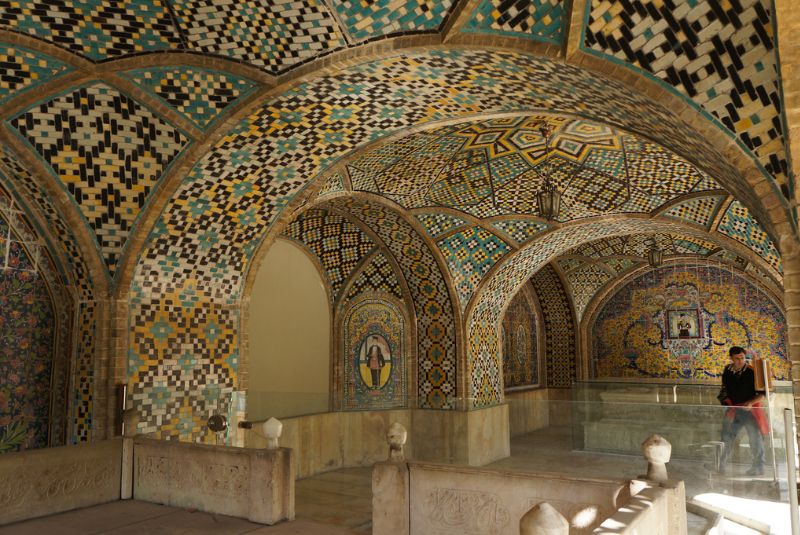
This beautiful porch dating back to 1759, functioned as the Tehran abode of Karim Khan Zand, the founder of the Zand dynasty. Inside this porch are a small marble throne and a small pond with a fountain in the middle. One of the priceless pieces of art in this part of the Palace is the tombstone of Naser al-Din Shah. He was buried here because he was fond of this area and spent much time here relaxing and smoking his water pipe in quiet reflection during his lifetime.
Mirror Hall (Talar-e Ayneh)
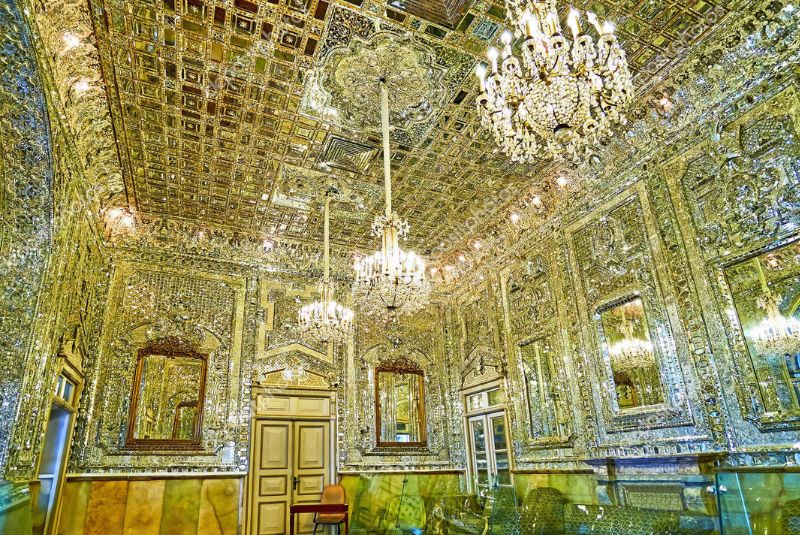
This hall is the most renowned of the halls of the Golestan Palace. The hall is notable for its colored and exceptionally handmade mirrorwork that doubles its beauty.
Aks Khaneh (Historical Photograph Gallery)
It exhibits a charming collection of Qajar-era art, especially the portraits of the shahs wearing jewels and crowns and pictures of everyday life in 19th-century Iran.
The Howze Khaneh
It was used as a summer chamber during the Qajar era and had a unique cooling system that pumps water from an underground system into small ponds inside the chambers. The water from the underground system is also channeled outside to irrigate the royal gardens.
The Brilliant Hall (Talar-e Berelian)
It was built by the order of Nasser ed-Din Shah and was named because of the intelligent mirrorwork of Iranian artisans that adorned it.
Diamond Hall (Talar e Almas)
Built during the time of Fath Ali Shah and renovated by Nasser ed-Din Shah, the hall features Roman arches and European wallpaper on its walls. It also boasts exceptional mirror work that gives it the appearance of diamonds.
Salam Hall (Coronation Hall)
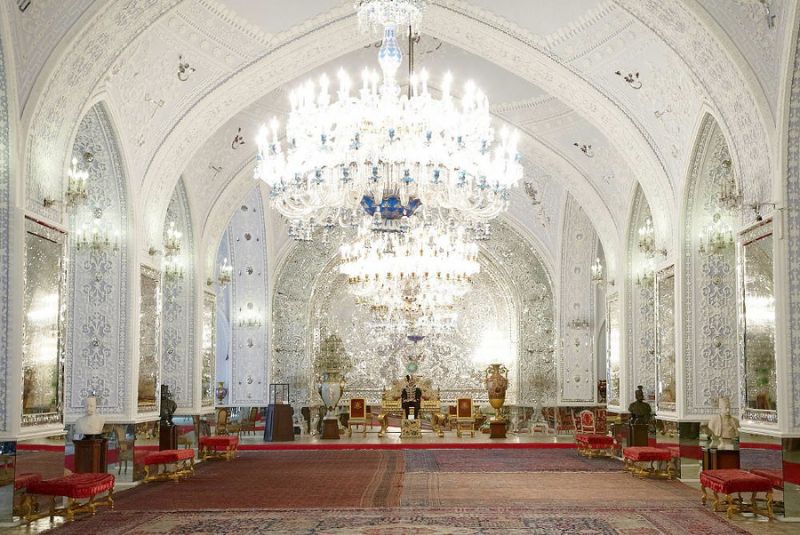
Originally built as a museum by Nasser al-Din Shah, it was the first museum in Iran; this hall showcases a collection of Iranian and European paintings, along with gifts presented to the Iranian court. You'll also marvel at some of the royal jewels in glass cases.
Since the Salam ceremony was held in this hall, it was known as the Salam Hall, and later it became the Coronation Hall because of the coronation of the Pahlavi kings that took place there.
The Edifice of the Sun (Shams-Al Emarat)
It is the most dazzling edifice of the Golestan Palace. This 5-story building was made for Nasser al-Din Shah because he wanted a tall building to have a dramatic view of the whole capital city from its top. The building blended traditional Iranian and Western architecture and was the first with a metal frame in Iran.
Ivory Hall (Talar-e Adj)
This is a grand dining room decorated with stunning gifts presented to Nasser ed-Din Shah by European monarchs. The decor's intricate details and exquisite craftsmanship will leave you in awe. You can even see what the hall looked like during the Qajar period through a beautiful watercolor painting by Mahmoud Khan Saba (Malek osh Shoara) on display.
Emarat-e Badger
This big royal hall has two side rooms, two porches, a pound house in the cellar, and a superb mirror-work ceiling. The title of this edifice derives from its lofty wind towers that allow the cooling breeze to move via them to produce natural ventilation and passive cooling in the buildings.
| Read the full article: The History and Tales of Golestan Palace
The Abyaz Palace
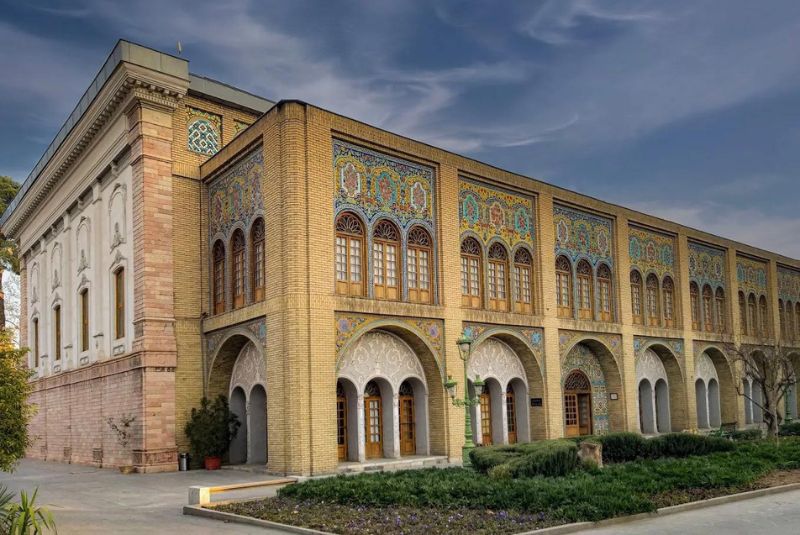
This Palace harbors the Ethnographical Museum featuring a range of figures in traditional ethnic outfits. Here you can marvel at the fantastic pieces of Louis XVI living room decors, velvet curtains, gold and bronze statues, and a few Turkish rugs gifted to Nasser ed-Din Shah by The Ottoman Sultan Abdul Hamid.
| Read more: 16 Most Beautiful Mosques You Should Visit
Saad Abad Historical Complex
Saad Abad Historical Complex is a magnificent royal complex located in the north of Tehran and nestled in the foothills of the breathtaking Tochal and Darband valleys.
Built during the Qajar dynasty in the 19th century, it served as the summer residence of both the Qajar and Pahlavi kings, thanks to its cool and pleasant climate, making it the perfect place for aristocratic summer living. It also has several palaces, museums and halls, including:
Saadabad Green Palace
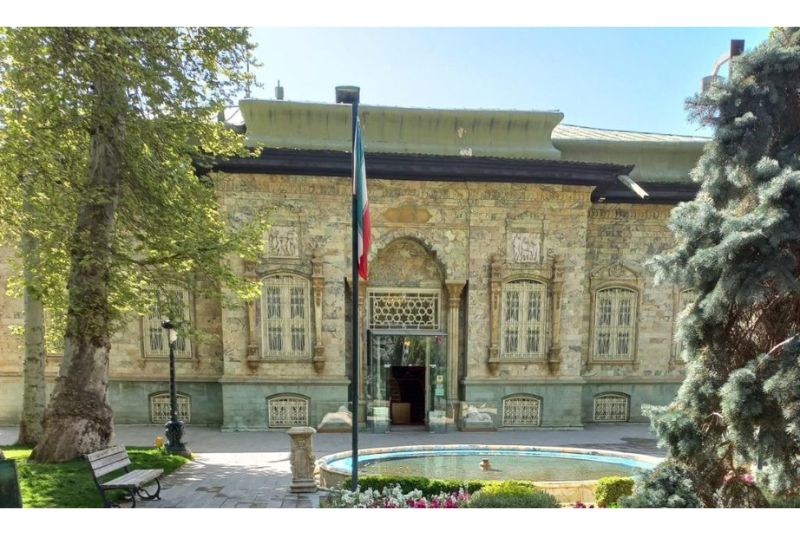
Constructed during the Pahlavi dynasty under the command of Mohammad Reza Shah, Saadabad Green Palace was the first Palace built in the complex. This monument served as the private Palace of the Shah, where his private meetings took place. The exquisite bloom of its façade earned it the name 'Green Palace,' and it houses a collection of Persian craftworks, including mirror marquetry, Persian rugs, and plasterwork.
Mellat Palace

Mellat Palace is the most famous Palace in the Saadabad Complex. It is a two-story building with many large rooms used as residences and offices of Reza Shah Pahlavi and his son, and it showcases captivating artworks such as figures and chinaware. It also displays four big mural paintings with the subjects of renowned Iranian myths.
Mellat Museum
This museum consists of items representing the history of Iranian civilization and art, especially during the pre-Islamic era. It also contains artworks accomplished by African, Indian, Far Eastern, Eskimo, and Mayan paintings.
Fine Arts Museum
Fine Arts Museum displays many paintings by prominent Iranian painters such as Sohrab Sepehri, Hossein Mahjobi, Faramarz Pil Aram, and Hossein Zende Roode. There are also many miniature artworks by great Western artists from the 17th to the 20th century, such as Salvador Dali, Peter Graham, Ivanovic Shishkin, and Joule Berton.
Master Behzad Museum
This museum is devoted to Iranian miniatures painted by Hossein Behzad (1895-1968), who revolutionized Iranian painting.
Museum of Anthropology
The Museum of Anthropology displays the lifestyle and traditions of Iranians throughout history. It exhibits various objects like irrigation, farming, fishing, hunting tools, clothing, lighting tools, and handicrafts.
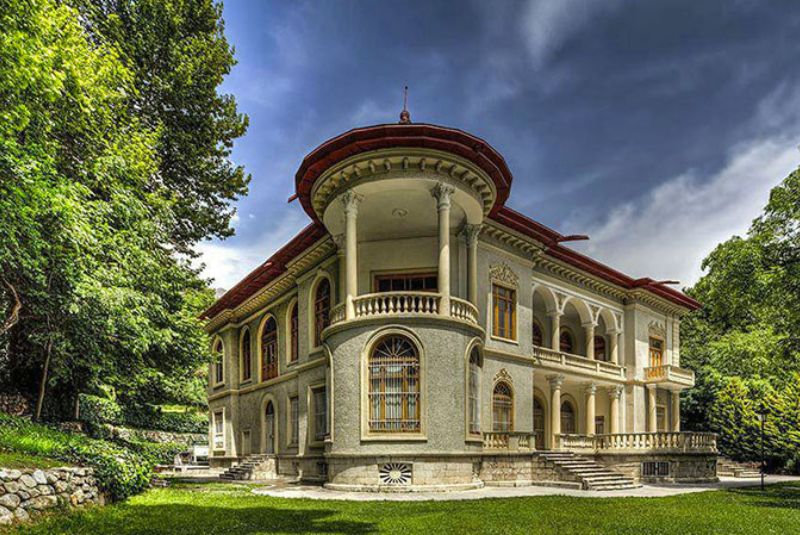
Abkar Museum
This museum displays miniatures of a 20th-century artist, Klara Abkar, with a unique tone in painting that gives everyone's eyes calm and tranquillity and takes tourists to a world of spirituality and a poem-like or light-music-like harmony. Her source of inspiration was affluent Iranian literature and mysticism.
Mir Emad Museum
This museum displays the most prominent post-Islamic Iranian art known as calligraphy. It exhibits many calligraphic writing styles from the 10th to the 19th centuries. It also displays the works of Mir Emad, the most notable 18th-century calligrapher, who was introduced to art by his fantastic calligraphic works.
Water Museum
This museum showcases ancient and traditional water supplement and distribution methods and tools. It introduces tourists to water-related facilities, such as water reservoirs and traditional icehouses.
Military Museum
This museum exhibits Iranian army uniforms from Achaemenians up to the present. It also displays weaponry consisting of some unsophisticated weapons used in ancient times until the firearms period. In addition, part of the narrative and history of the Iraqi-imposed war against Iran is displayed to tourists here.
Niavaran Palace Complex
This stunning complex, spanning over 11 hectares, is an oasis of natural and historical beauty. All monuments in this complex belong to the Qajar and Pahlavi Periods, making it a treasure trove of Iranian history.
The complex was named Niavaran after a garden built by the Qajar king Fathali Shah. It has many mansions, palaces, and museums, including:
Ahmad Shahi Mansion (Koshk-e Ahmad Shahi)
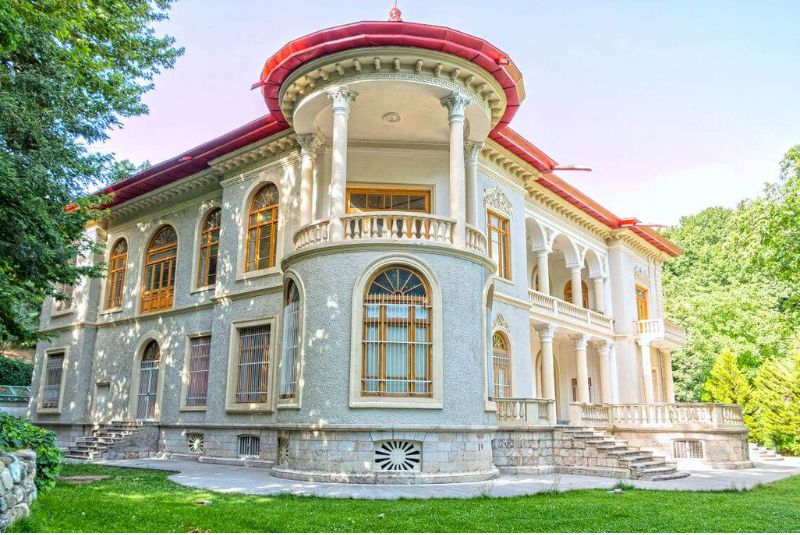
Built during the era of Ahmad Shah, this mansion is located in the center of the complex and has two floors. The Palace's bricks are decorated with eclectic designs and pea colors, making it a sight to behold.
Sahebgharani Mansion
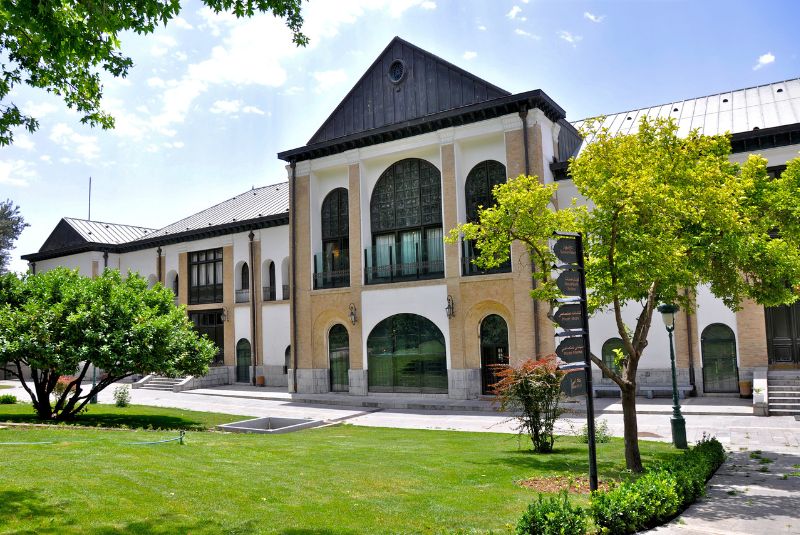
Built by order of Naser al-Din Shah in 1267 A.H., this mansion has two floors. The upper floor contains different parts and rooms such as the Documents Room, Military Talks Room, Mirror Hall, Private Negotiations, Ambassadors Lounge, and Midday Resort. The lower floor, known as Hoz Khaneh, comprises glamorous elements such as the Hall of Hoz Khaneh, Tea House, Korsi Khaneh, Bar, and pieces of art created by renowned Iranian artists.
Jahan Nama Museum
Located in the western part of Sahebgharani Palace, this museum exhibits a substantial connection to the perfectionism of handicrafts from ancient eras. The museum displays historical objects from diverse civilizations and societies worldwide and charming pieces of art by leading and creative Iranian and foreign artists.
Niavaran Private Palace
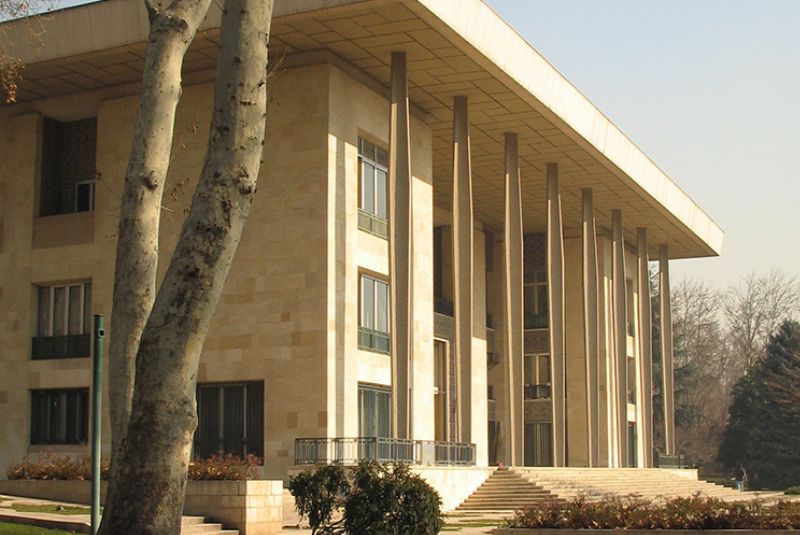
Measuring around 9000 sq.m in area and 14.m in height, this Palace was the residence of Mohammad Reza Pahlavi and his family from 1968. The Palace has a quadrilateral plan and an interior design inspired by Iranian architecture. The Palace's ceiling is made of aluminum, opening up in the middle electro-mechanically. The Palace is decorated with valuable artworks, tapestries, precious Persian rugs and chinaware, and crystals of Sevres and Rosenthal and other factories.
Royal Library Museum
This museum belonged to Farah Pahlavi and has two floors and one basement. The building's interior layout is decorated with modern architecture, and it was not only used as a library but also as a place to enjoy music and display artwork. The library has around 23,000 volumes and nearly 16,000 titles, comprising Persian and foreign works.
Automobile Museum
The most interesting museum to see in this complex is the Shah Executive Automobile Museum! In this museum, you can see luxurious classic automobiles that once belonged to the Royal Family.
Inscription Garden Museum
Finally, as you stroll through the green space of Niavaran Complex, you can see the Inscription Garden Museum. In this museum, you will find 15,000-year-old inscriptions of Moulages from ancient times of Persia.
Shahrbani Palace

This beautiful Palace is a perfect example of Iranian neoclassical architecture, which was at its peak during the first years of the first Pahlavi regime.
As you approach the Palace, you will be amazed by the tall building made of modern materials. But what really catches your eye are the stunning stone columns that adorn the porch of the Palace. These columns have been carved with intricate details reminiscent of the capitals of Persepolis's palaces.
When you look closer, you'll see that the columns are sculpted with images of Achaemenid soldiers, adding to the grandeur of the building's facade. Two beautifully decorated staircases lead to the entrance door of the Palace, which is modeled on the architecture of the Apadana Palace.
The architect and designer of this Palace was Gabriel Gorkian, an Iranian-Armenian who studied in Vienna, Austria, and was one of the founders of modern Iranian architecture. Gorkian's design perfectly blends traditional Iranian and modern European architecture.
Mozaffari Palace

This beautiful Palace has an interesting history that dates back to the Qajar period when Mozaffar al-Din Shah contracted tuberculosis in Tabriz. On the advice of his physician, he migrated to a pleasant climate in Darabad, Tehran, where this stunning Palace was built for him.
The Palace, built on two floors, perfectly blends French architecture and Iranian design. It's the only Qajar palace with an oval roof, gable, and wooden truss, making it a unique architectural masterpiece.
As you enter the Palace, the first thing that catches your eye is the stunning blue fountain in the shape of a war helmet. The Palace's courtyard has mirrors overlooking the fountain, making it a unique and breathtaking sight. The staircases, neck plastering of the walls of each floor, and wooden decorations of this Palace are also unique and add to its charm.
After the death of Mozaffar al-Din Shah, this center became a sanatorium for lung patients. Later, the land and the palace building remained unused until the late Dr. Masih Daneshvari built a nursing school there in 1932. Today, several buildings have been erected on the site by the Ministry of Health, institutions, and charities.
Masoudieh Palace
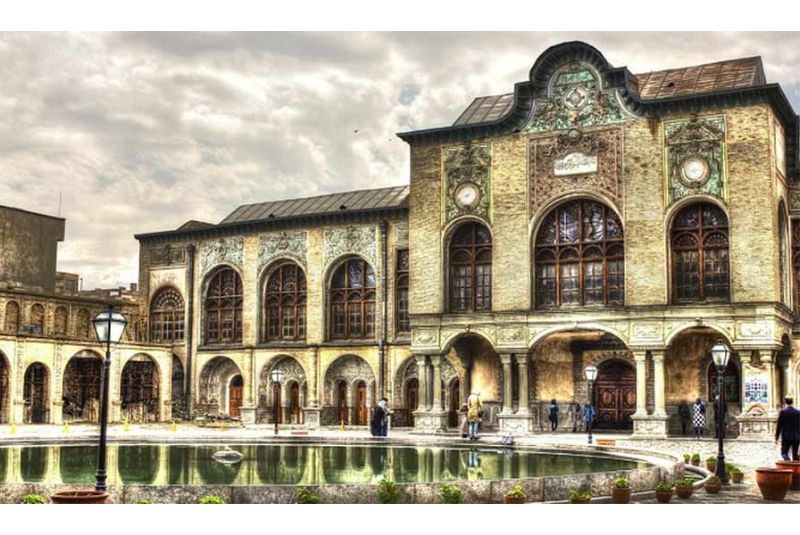
This stunning Palace was built in 1878 by Naser Al-Din Shah for his son Masoud Mirza, who used it as his main residence while governor of Isfahan. The Palace played a significant role in Tehran's modern history, from the bombing of Mohammad-Ali Shah's coach in front of the building to its role as a gathering place for constitutional revolutionaries.
Over the years, the Palace has been used for various purposes, including hosting the first official library in 1926, which later became the National Library. Some of the antiques from the collection are still in Masoudieh Palace, making it a significant historical site.
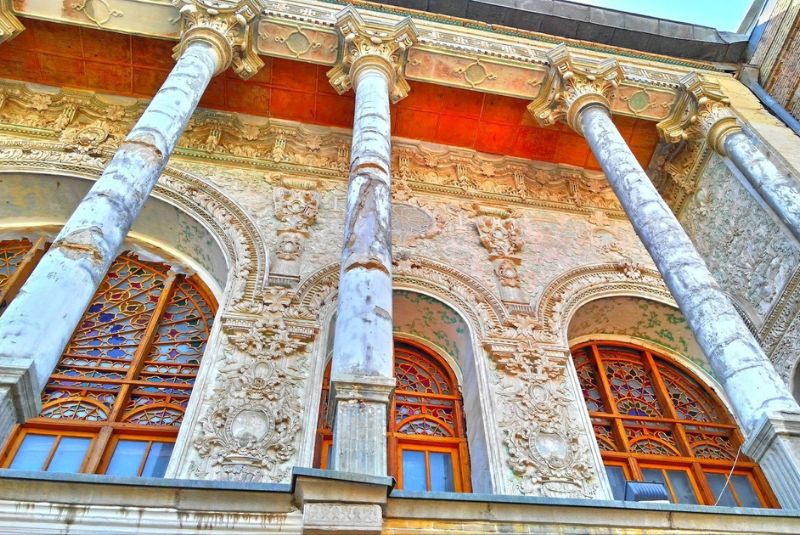
Today, it is a beautiful garden complex with shops, cafes, and other historic buildings like the Divankhaneh Palace. The Divankhaneh Palace, the first building visitors see upon entering the complex, is a prominent example of Qajar architecture. Its Gridded windows provide enough fresh air and sunlight into the rooms, and the natural patterns, floral forms, and landscape ornaments bring a fresh, European-style image to the Palace.
In addition to the main Palace, the complex includes a forum, restaurant, spring house, Seyed Javadi Mansion, Moshir al-Molk Mansion, and entrance hall.
Share your story!
Comment below and let us know about your Experience.
Your story inspires others!


Comment
Leave a Comment